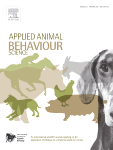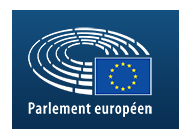Document type: scientific article published in Applied Animal Behaviour Science
Authors: Sarah Catherine Paul, MartinStevens
Preview: Visual information is key to how many animals interact with their environment, and much research has investigated how animals respond to colour and brightness information in the natural world. Understanding the visibility of features in anthropogenic environments, and how animals respond to these, is also important, not least for the welfare and safety of animals and the humans they co-exist with, but has received comparatively less attention. One area where this is particularly pertinent is animal sports such as horseracing. Here there is a need to understand how horses see and respond to obstacles, predominantly fences and hurdles, as this has implications for horse and rider safety, however obstacle appearance is currently designed to human perception. Using models of horse colour and luminance (perceived lightness) vision, we analysed the contrast of traditional orange markers currently used on fences from 11 UK racecourses, and compared this to potential alternative colours, while also investigating the effect of light and weather conditions on contrast. We found that for horses, orange has poor visibility and contrast against most surroundings. In comparison, yellow, blue, and white are more conspicuous, with the degree of relative contrast varying with vegetation or background type. Results were mostly consistent under different weather conditions and time of day, except for comparisons with the foreground turf in shade. We then tested the jump responses of racehorses to fences with orange, fluorescent yellow, bright blue, or white takeoff boards and midrails. Fence colour influenced both the angle of the jump and the distances jumped. Bright blue produced a larger angle of takeoff, and jumps over fluorescent yellow fences had shorter landing distances compared to orange, with bright blue fences driving a similar but non-significant trend. White was the only colour that influenced takeoff distances, with horses jumping over white fences having a larger takeoff distance. Overall, our results show that current obstacle coloration does not maximise contrast for horse vision, and that alternative colours may improve visibility and alter behavioural responses, with the ultimate goal of improving safety and welfare.




